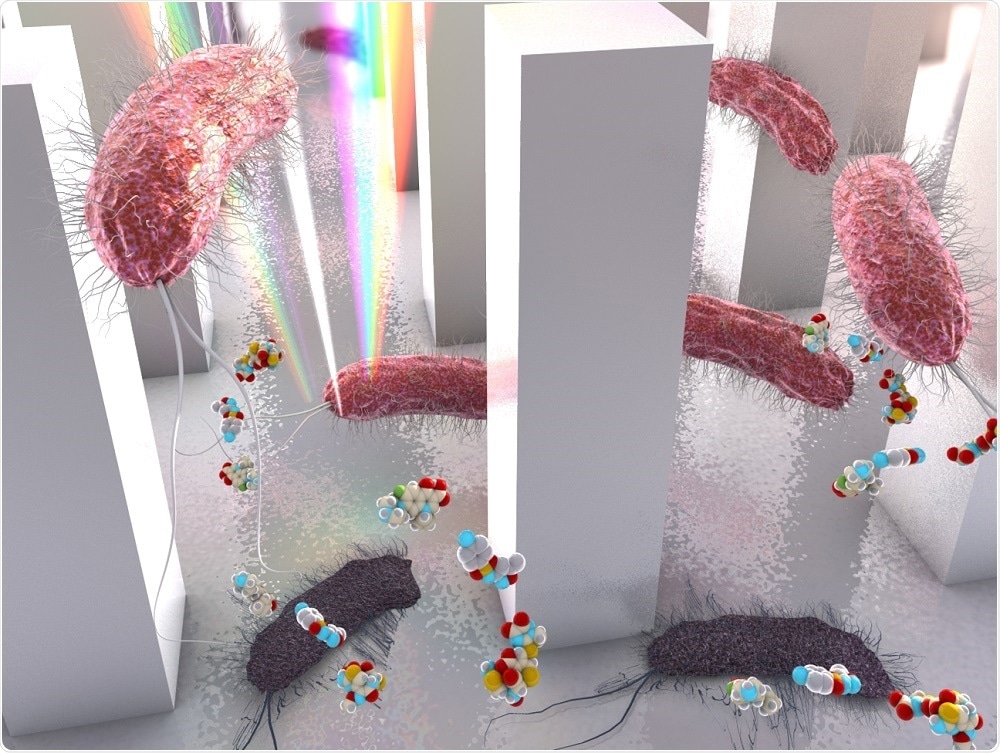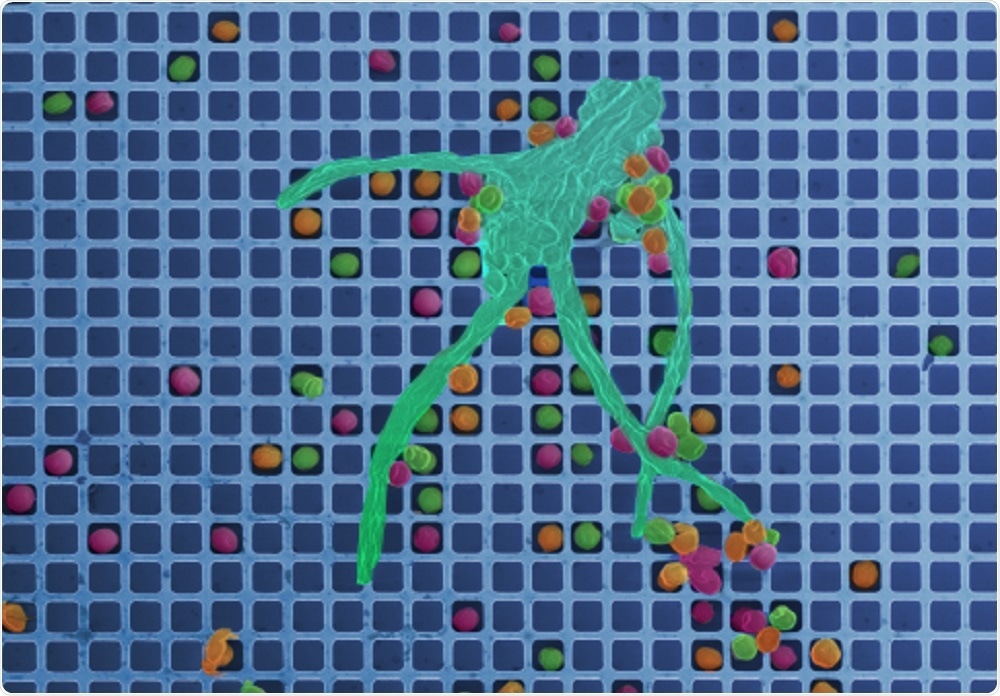Sponsored Content by PittconFeb 13 2019
An interview with Dr. Ester Segal from the Technion (Israel Institute of Technology), discussing the development of a 2D silicon microarray for rapid antimicrobial susceptibility testing (AST) of bacteria and fungi in the community. Dr. Segal will present her work at Pittcon 2019. Interview conducted by Alina Shrourou.
What is rapid antimicrobial susceptibility testing (AST) and how is it used?
AST is a test that already exists, but unfortunately, it is mostly practiced in clinical laboratories in hospitals and to less extent at the community level. It is a very simple technique that allows physicians to discriminate between infections caused by drug-sensitive/or resistant bacteria and prescribe the appropriate antibiotic treatment needed for specific patients.
 Jarun Ontakrai | Shutterstock
Jarun Ontakrai | Shutterstock
For this test, patients provide a urine or blood sample, which gets sent to a lab where bacteria are then isolated from it. Next, the bacteria are tested against a wide array of antibiotics to see whether they grow in the presence of the antibiotics. Using the AST results, doctors know to which antibiotics and what dosage the bacteria will respond well to.
Currently, this technology is generally found in main hospitals and is not widely used in the community. Rapid administration of the correct antibiotics not only saves lives but also reduce widespread overuse and misuse of antibiotics in clinics.
What are the benefits of AST?
I am sure that we are all aware of the extent of the problem with antimicrobial resistance. It is expected that by the year 2050, antimicrobial resistance will be the number one cause of death worldwide. It is expected that more than 10 million people will die each year as a direct result of exposure to these superbugs.
Even now, the numbers are pretty scary. In Europe, about 25,000 deaths per year are directly related to acquired antimicrobial resistance. It is a huge problem in our society, especially for old people or people with compromised immune systems. When these individuals visit a hospital or even a centralized clinic, they really are at risk of acquiring such resistant bacteria.
Unfortunately, we do not have enough antibiotics in the pipeline. The development of new antibiotics is not evolving fast enough, compared with the pace at which bacteria acquire resistance, so the threat posed by superbugs is immense.
Regarding the benefits of AST, one advantage is that a patient is not exposed to an antibiotic that fails to combat the disease-causing bacteria. From the patient’s perspective, they will have a much faster recovery and much better prognosis. And from a community point of view, it will reduce the misuse and overuse antibiotics and consequently will slow down the development of new superbugs.
This is only one part of the solution to antimicrobial resistance. The approach is not just about one test or a new antibiotic, but a holistic approach that needs to be addressed globally. Rapid and affordable AST is just one approach to lowering exposure to antibiotics and obviously not the only solution to this very complicated problem.
Please outline your work involving the use of functionalized photonic 2D silicon microarrays for susceptibility testing.
Our AST system employs a silicon chip, similar in many aspects to chips found in our smartphones and computers with, a unique periodic structure. We create a structure on the silicon surface that serves two purposes.
Firstly, it makes the bacteria adhere to and colonize the surface. Secondly, the structure reflects the light in a very precise manner which allows us to track the bacteria on the just by analyzing the changes in reflected light. Therefore, we do not need sophisticated microscopes to observe the bacteria; we get the information about the bacteria just by analyzing the light that we collect from the surface.

Why does the silicon array provide an ideal platform for testing bacterial and fungal species?
In general, bacteria like to reside on surfaces, but we need to provide them with the right conditions to relocate quickly. Therefore, both the structure of the silicon chip and chemistry of surface are important. This is at the heart of our technology − ensuring the bacteria will like the surface, interact with it and quickly reside on it.
Then, the bacteria on the chip are exposed to various antibiotics and we can learn about their response to the drug in less than two hours. While, conventional AST, practiced in the clinical labs, takes at least 8 hours and expensive equipment.
What information about the bacteria/fungi does the on-chip device provide?
Once you understand the concept of the measurement, it is pretty simple. We basically get growth curves of the bacteria on the chip when exposed to different antibiotics at various concentrations. Based on these growth curves, we can determine which antibiotics (and at what concentration) stops the bacteria from growing or kills the bacteria. All this information is gathered from the chip within less than two hours.
What can we expect to take home from your talk at Pittcon 2019, titled “On-Chip Rapid Diagnostic Susceptibility Testing of Bacteria and Fungi from Clinical Samples”?
The ultimate goal of my lab is to make this technique translational into daily clinical practice.
Providing rapid AST results in a simple and affordable manner can save lives and hopefully minimize the rise of microbial resistance.
How do you think your test will help to tackle antibiotic resistance?
In Israel, Europe and the US, we rely on doctors to prescribe antibiotics and we don't have access to antibiotics without a prescription. However, in many countries such as India, you can just go to a pharmacy or store and buy antibiotics whenever you feel sick, without needing a prescription. Therefore, it could be the case that while we are trying to fight the emergence and spread of superbugs in the western world, in these other countries, the fight is almost lost.
Hopefully, a cheap and simple AST test that can be used outside of a laboratory will allow population with limited access to medical care get proper antibiotics while reducing the misuse and overuse.

What are you most looking forward to at Pittcon 2019?
It is my first time at Pittcon, so I am really looking forward to participating in this event. I started to do my homework in advance to see which presentations I would be able to attend.
I am really looking forward to the ACS Sensors session. It is a relatively new journal that is making a huge impact in the field of sensors and biosensors, so I am really looking forward to the talks in this session. I am also very excited about attending the talks being presented in honor of the different prize winners. It is going to be a fascinating conference.
Where can readers find more information?
About Dr. Ester Segal
 Dr. Segal is an Associate Professor of Biotechnology and Food Engineering at the Technion – Israel Institute of Technology. Her research focuses on the broad interface between materials science and biotechnology to address problems in medical diagnostics, food safety, and therapy.
Dr. Segal is an Associate Professor of Biotechnology and Food Engineering at the Technion – Israel Institute of Technology. Her research focuses on the broad interface between materials science and biotechnology to address problems in medical diagnostics, food safety, and therapy.
Dr. Segal received her Ph.D. in Chemical Engineering from the Technion in 2004 and later trained at the University of California – San Diego, where she was a Rothschild postdoctoral fellow.
Dr. Segal has authored more than 80 peer-reviewed journal articles, reviews, book chapters, and patents. She has received numerous prestigious fellowships and prizes over the course of her career, most recently the 2019 Advances in Measurement Science Lectureship Award by the American Chemical Society.
About Pittcon
 Pittcon® is a registered trademark of The Pittsburgh Conference on Analytical Chemistry and Applied Spectroscopy, a Pennsylvania non-profit organization. Co-sponsored by the Spectroscopy Society of Pittsburgh and the Society for Analytical Chemists of Pittsburgh, Pittcon is the premier annual conference and exposition on laboratory science.
Pittcon® is a registered trademark of The Pittsburgh Conference on Analytical Chemistry and Applied Spectroscopy, a Pennsylvania non-profit organization. Co-sponsored by the Spectroscopy Society of Pittsburgh and the Society for Analytical Chemists of Pittsburgh, Pittcon is the premier annual conference and exposition on laboratory science.
Proceeds from Pittcon fund science education and outreach at all levels, kindergarten through adult. Pittcon donates more than a million dollars a year to provide financial and administrative support for various science outreach activities including science equipment grants, research grants, scholarships and internships for students, awards to teachers and professors, and grants to public science centers, libraries and museums.
Visit pittcon.org for more information.